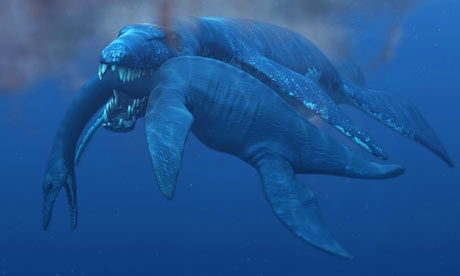 Spiny lobster. In complex crustaceans, such as shrimps and lobsters, almost every segment is different, bearing antennae, jaws, claws, walking legs, paddles and gills. (Credit: iStockphoto/Tammy Peluso)
Spiny lobster. In complex crustaceans, such as shrimps and lobsters, almost every segment is different, bearing antennae, jaws, claws, walking legs, paddles and gills. (Credit: iStockphoto/Tammy Peluso)From Science Daily:
ScienceDaily (Mar. 18, 2008) — Researchers have found evidence which suggests that evolution drives animals to become increasingly more complex.
Looking back through the last 550 million years of the fossil catalogue to the present day, the team investigated the different evolutionary branches of the crustacean family tree.
They were seeking examples along the tree where animals evolved that were simpler than their ancestors.
Instead they found organisms with increasingly more complex structures and features, suggesting that there is some mechanism driving change in this direction.
Read more ....
















































